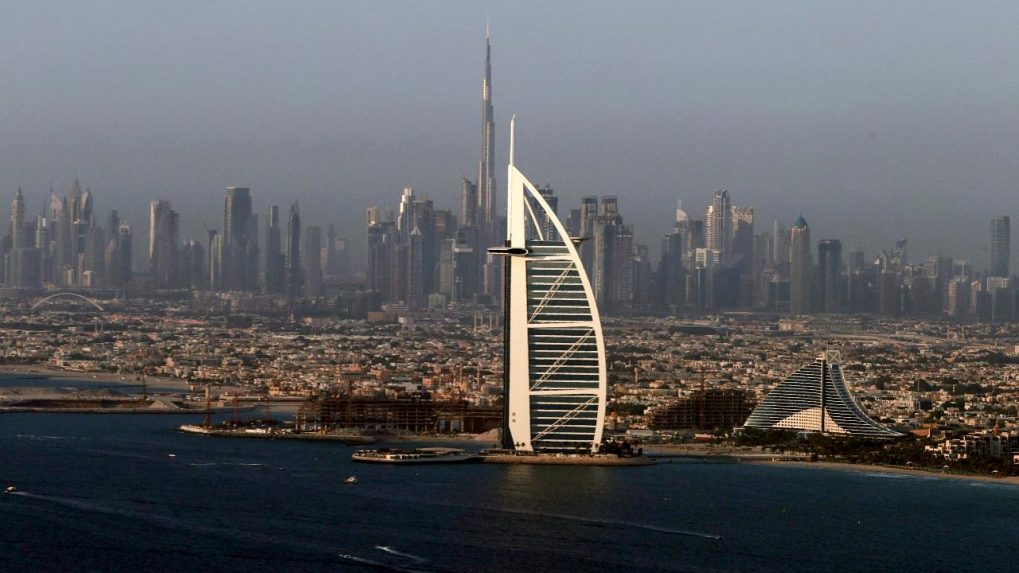The announcement of a Comprehensive Economic Partnership Agreement (CEPA) between India and the United Arab Emirates was still relevant. What wasn’t was the breathtaking speed with which the deal was finalized. As Prime Minister Narendra Modi mentioned on the occasion of the signing on February 18, it should be noted that such an important agreement was concluded in a record time of less than 3 months.
The agreement is said to be 881 pages. Despite the enormous publicity that followed the signing of the agreement, the CEPA text has not yet fallen into the public domain. All reporting on the deal is entirely based on GDP releases.
The press release lists an impressive range of possible benefits. Union Minister for Trade and Industry, Consumer Affairs, Food and Public Distribution and Textiles Piyush Goyal said the agreement covered the widest range of topics – from free -exchange to the digital economy through public procurement and several other strategic areas of mutual interest.
Read also :
CEPA is expected to generate 10 lakh jobs in several labor intensive sectors. Major industries such as gemstones and jewelry, textiles, leather, footwear, furniture, agricultural and food products, plastics, engineering products, pharmaceuticals, medical devices, sports, etc should benefit from CEPA.
It was mentioned that there are many firsts in the CEPA agreement. It is said that UAE had agreed to automatic registration and marketing authorization of Indian drugs upon regulatory approval in developed countries such as US, EU, UK and Japan.
It has been reported that the UAE has offered immediate zero-duty market access from day one of the agreement’s entry into force, to products accounting for 90% of India’s exports to the UAE by value . The Minister underlined that “this is a win-win agreement.
So there are a lot of things that seem laudable in CEPA. However, the devil in all of these deals is in the details. And details won’t be known until the deal is in the public domain.
As India learned the hard way, rules of origin (RoO) are a key part of all these free trade agreements. Basically, the rules prescribe the criteria for determining the domestic source of a product. Since the advantage should only be extended to goods originating in the partner country, these rules are of crucial importance. This is all the more true in the case of a country like the United Arab Emirates which has little manufacturing expertise and is essentially a trading hub. Additionally, the UAE has at least 45 free trade zones with relaxed standards.
Minister Piyush Goyal spoke of “strict rules reflecting the requirements for substantial transformation of up to 40% added value”. Undoubtedly, 40% is high, but the details of what constitutes added value will have to be seen in the CEPA for a better appreciation.
In view of wide-ranging concerns about misuse of rules of origin, the Central Board of Excise and Customs (CBIC) had in 2020 amended certain provisions of the Customs Act and introduced The Customs (Administration od Rules of Origin under Trade Agreement Rules (CAROTAR) This was done primarily to strengthen the certification process and ensure that benefits are only extended to FTA-eligible imports.
Reference was made to the possible imposition of safeguard duties in the event of an import surge. This is a standard prescription approved by the WTO. For example, in India’s trade agreement with Singapore, another country in the same position as the United Arab Emirates, Article 2.9.1 of the Comprehensive Economic Cooperation Agreement (CECA) allows for the imposition of bilateral safeguard measures.
In the case of CEPA, since the tariff in the UAE (and indeed in the whole of the GCC) is only 5% for most goods, the benefit for Indian exports will be minimal. Hopefully, CEPA will address non-tariff barriers, especially sanitary and phytosanitary measures.
The UAE market is small. It mainly acts as a gateway to the larger African market. It is unclear whether there will be additional benefits for Indian exporters exploring the African continent due to CEPA.
However, a typical package deal is much more than the merchandise. It encompasses services, investment cooperation, mutual recognition of professions, movement of people. With investments of around 11.67 billion dollars, the United Arab Emirates is the ninth largest investor in India. Given the sovereign wealth funds the UAE has, the potential is huge here. Combined NRI investments in the UAE are estimated at around $55 billion – again an area of potential growth.
Dubai has a thriving trade with China as well as with Pakistan. Although this trade should not necessarily be suspicious, we should be aware of this fact. This is all the more true as we are wary of imports from China. CEPA must not become a support for such imports.
Dubai is a huge real estate market. A major financial center. We should also be aware that in its April 2020 report on the United Arab Emirates, the Intergovernmental Financial Action Task Force (FATF) expressed concerns about Dubai. The emirate has been placed under observation to ensure it fully implements anti-money laundering legislation and improves cross-border cooperation.
Most of the smuggling cases detected in India have a link with Dubai. Many wanted criminals are believed to operate from there. In this context, it is imperative to ensure that CEPA does not become a mechanism for money laundering. Hopefully CEPA has sufficient safeguards.
The success of CEPA will depend entirely on its implementation and cooperation between the two countries. There is undoubtedly enormous potential. The goal that CEPA would bring the total value of two-way trade to more than $100 billion within five years is achievable.
— Najib Shah is the former chairman of the Central Excise and Customs Board. The opinions expressed are personal.
(Edited by : Jomy Jos Pullokaran)
First post: STI

